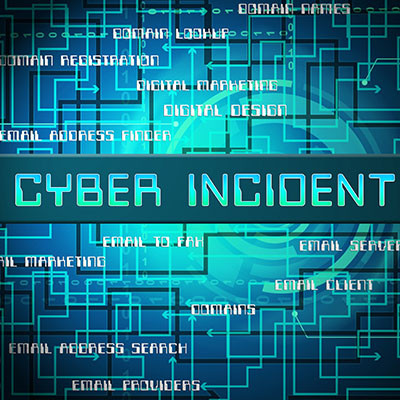You don’t need us to remind you that running a business can be incredibly stressful. This stress comes from all kinds of factors, whether it concerns your staff, your management, or even your customers. However, if left unchecked, friction between your various internal forces can have negative consequences on your operations.
Global Tech Solutions Blog
Small and medium-sized businesses largely rely on their standing amongst their audience, which means their reputations are critically important to preserve. Unsurprisingly, one of the fastest ways to damage—if not eliminate—their reputation amongst the public is to suffer a cybersecurity event. Let’s examine some statistics, and consider what you need to do to keep your business from becoming one.
When it comes to your business, you want to achieve at least some level of satisfaction. Still, you should always strive to improve certain parts of your operations, like customer service or the services you provide in general. That said, let’s consider when you might think, “Enough is enough,” and when complacency might turn sour.
There are challenges that go with running any business. Some of the most common come from unhappy employees. If you understand some of the most common complaints that today’s worker may make, you can proactively ward against them and create a happier and more productive workplace. Let’s take a look at five of the most common employee complaints in today’s workplace and what you can do about them.
It isn’t uncommon for businesses to engage in actions that seem to directly contradict their own best interests. This is called self-sabotage, and it can be a costly and extremely debilitating phenomenon for a business. Let’s go through some of the actions that may be holding your business back, even if you don’t realize it.
In business, organizations that are able to automate processes have a leg up on organizations that rely on humans to do everything. Not only does it cost a lot less to run a business that has automated processes, it also helps improve organizational focus and efficiency by streamlining processes and removing the moving parts that can sometimes hinder operational progress. That’s not to say that there aren’t some places that a business can greatly benefit from a human touch. Let’s take a look at both sides of the argument.
If you want your business to grow, then you’re going to have to get used to dealing with complex problems that require complex solutions. You can implement technology to make solving these challenges easier, but at the same time, you want to be careful that the solutions you implement are not going to get in the way of productivity. Today, we want to discuss good old-fashioned bureaucracy, and how while you might not want to build it into your strategy, it will probably happen anyway.
With margins getting thinner for everyone, a lot of businesses have begun to outsource their human resources initiatives or cut them entirely. Unfortunately, for the business that has to slash their HR budget, situations can arise where issues turn into problems and if there is no one actively doing the HR job.
To meet compliance requirements for technology an organization will need to understand the regulations they operate under. New entrepreneurs may find it startling when they realize that they have a lot more people/organizations to answer to than they thought. This week, we aren’t going to go through individual regulations, but how IT generally fits into compliance and how not staying up to date can cost your business dearly.
No business can be successful without collaboration. As such, businesses invest heavily in tools which facilitate effective collaboration for their employees. Let’s take a look at some of the variables that can contribute to an effective collaboration strategy, as well as how you can promote collaboration in the workplace.
When you run a business you have so many variables to balance and so little time to do so that technology inevitably becomes an essential cog in your ability to manage everything. Unfortunately, technology isn’t cheap and the technology that you think you need may not be a viable purchase this year. Today, we thought it would be good to identify three strategies that can help you save money, while also getting the benefits that technology brings.
Businesses have always attempted to optimize productivity for their employees in a variety of ways, but there are certain distractions that will always persist–especially in today’s incredibly connected world. One of these distractions is social media, and it creates the illusion of productivity when, in reality, it’s really not helping much.
Considering the circumstances of the past couple years, it’s no surprise that many businesses have turned their attention towards creating a long-term plan for a remote workforce. There are many considerations that must be brought front and center to create such a remote work policy, many of which require a focused examination of technology and the practices associated with it. Let’s take a closer look at what you might want to think about when crafting your remote work policies.
When it comes to your business, what do you prioritize? Do you focus more on security, or do you focus more on the business continuity side of things? The reality here is that both are of critical importance. Unfortunately, however, it seems that many executives feel like the current circumstances surrounding the ongoing COVID-19 pandemic have led them to prioritize one over the other.
Have you ever felt the anxiety of missing out on something for no real logical reason? This fear, also known as the “fear of missing out,” (or FOMO) is applicable not just in social situations, but in the business and professional world as well. The concept might seem rather juvenile in nature, but it is a very real thing that can influence your actions… and not always in a positive way.
Bad things happen. If your business fails to plan for the worst, when something terrible does happen, you could be looking at disaster. If you have a comprehensive continuity plan in place, however, you have a fighting chance. Let’s discuss some of the elements you absolutely need to address when making your business’ continuity plan.
There are some periods in history referred to as “great,” many of which were devastating in scope. We are currently living through a period that is becoming known as The Great Resignation. People are leaving their jobs in droves without having other employment opportunities lined up. As you can imagine, this is creating significant challenges for many businesses. Let’s take a closer look at what The Great Resignation really is and why it’s important to understand for a small business.





















